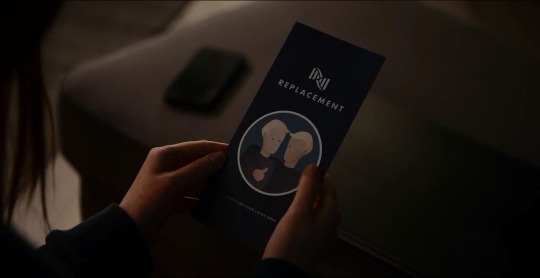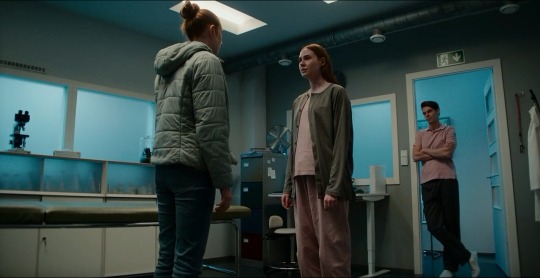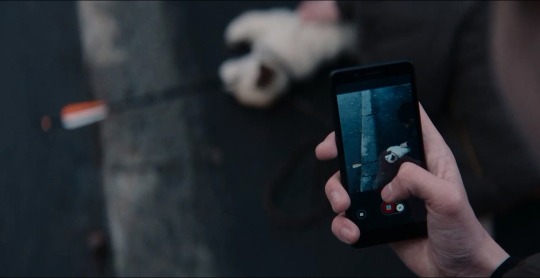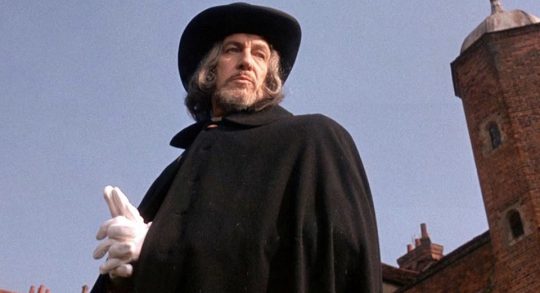#michael stearns
Text
Doc Stearn...Mr. Monster
Copyright Eclipse Comics
Doc Stearn..Mr. Monster #2
Cover Artist: Dave Stevens
Publisher: Eclipse Comics
Publication Date: January 1, 1985
Dave Stevens created many iconic coves for Comico, Eclipse, and Pacific Comics during the 80s and early 90s and is best known for creating the Rocketeer. I love his nod to Our Gang(The Little Rascals).

View On WordPress
5 notes
·
View notes
Text










Dual (2022)
Director - Riley Stearns, Cinematography - Michael Ragen
#scenesandscreens#Dual#dualsim#riley stearns#Michael Ragen#beulah koale#Maija Paunio#Sanna-June Hyde#Andrei Alén#Kris Gummerus#karen gillan#aaron paul#theo james
17 notes
·
View notes
Text
Of Rage and Remembrance (Corigliano 85)
John Corigliano (16 febbraio 1938):
I. Of Rage and Remembrance, ciaccona (composta sulla base del III movimento della Sinfonia n. 1) per voci e orchestra su testo di William M. Hoffman (1991).
This is the season of stone:
Dead leaves on a garden wall,
Dried berries in bone-cold air,
A brittle moon,
An ashen sun.
Bear it,
Bear it, you tell me.
This is the season of stone.
Was there a time before…

View On WordPress
#James Shaffran#Jason Stearns#John Corigliano#Leonard Slatkin#Michael Accinno#Michael Forest#Michelle DeYoung#NAMES Project AIDS Memorial Quilt#National Symphony Orchestra#Robert P. Baker
4 notes
·
View notes
Text

Doc Stearn...Mr. Monster and the Little Rascals mid-80's poster by Dave "Rocketeer" Stevens (also the cover of 1985's Mr. Monster #2).
#mr. monster#doc stearn#Michael T. Gilbert#dave stevens#indie comics#80s#eclipse#great art#pulp#kids#1980s
1 note
·
View note
Note
I just received a copy of a book I've been very much looking forward to by a favorite author, but the quality of the book itself is... not great. Cheap paper, weak binding, even a weird illustration of the main character on the cover that I'm having trouble believing the author approved.
Obviously, I don't want to leave a bad review on Amazon or GoodReads or anywhere, as I'm 100% certain the content is as excellent as her other work. But how can I best let the publisher (Baen) know I'm disappointed without threatening to never buy her books again? Because, well, if this is the only option, I'm gonna keep buying them even in my disappointment.
Well, the first thing I thought when I read this was "Wow, I'm really glad I don't have anything in print from Baen at the moment except a couple of anthologized short stories." :)
As for the rest of it, let's take it point by point.
Adding a cut here, because this will run a bit long. Caution: contains auctorial bitching and moaning, painful illustrations of cases in point, and brief advice on how to complain most effectively. (Also links to paintings of cats.)
Cheap paper: This has been an accurate complaint since well before COVID—and it's often been worse since, with supply chain issues also being involved. That said: one way publishers routinely save money on printing books, especially the bigger ones, is by going for thinner/cheaper paper. I remember one of our UK editors going on at great length and with huge annoyance—during one of those late-night convention-bar bitch sessions—over how the only way they could get some really good books published (because Upstairs insisted on reducing the per-copy production costs) was by reducing the paper quality to the point where you could nearly read through it. Sacrificing decent text size(s) also became part of this. Nobody in editorial was happy about the result: but there wasn't much they could do.
Bad bindings: Similar problem. Sewn bindings used to be a thing in paperbacks... but not any more: not for a good while, now. These days, it's all glue. Even hardcovers are showing up glued rather than sewn. Don't get me started. :/ (This is why I so treasure some of the oldest paperbacks I've acquired, which are actually sewn.)
Crap covers: I've had my share of these—though my share of some really good ones, too. And one of the endless frustrations of traditional publishing is that the writer routinely has little or even no influence over what the cover will look like... let alone how much will be spent on it, or (an often-related issue) how good the execution will be.
There are of course exceptions. If you're working at the, well, @neil-gaiman -esque level or similar in publishing, a lot more attention is going to be paid to your thoughts. You may even be able to get "cover veto" written into your contracts, so that if you disapprove, changes will get made. But without actual contractual stipulations, the writer has zero legal recourse or way to withhold approval. (And I bet even Neil has some horror stories.)
The normal workflow looks like this. After a book's purchased, its editor and the art director discuss what it's about and what the cover should look like. The art director then hires an artist and tells them what to do. After that, the artist executes their vision and gets paid. It is incredibly rare for a writer to have any significant input into this process. And as to whether or not they approve of the final result, well... the publisher mostly just shrugs and goes back to eyeing the bottom line, muttering "Who told them they get a vote?"
Now, I've been seriously lucky to occasionally be an exception in this regard. In particular, my editors at Harcourt (when Jane Yolen and Michael Stearns were editing Harcourt's Magic Carpet YA imprint) would ask me what I thought would be a good idea for the next Young Wizards cover, and I'd think about it a bit and send them back a paragraph or so about some core scene. They'd then talk to their art director, and after that send their notes and mine to Cliff Nielsen (who started doing the covers for the hardcover and mass-market paperback editions of the series in the mid-90s) or to Greg Swearingen (who was the artist on the digest-format editions). And the results, by and large, were pretty good. ...I also think affectionately of the UK artist Mick Posen, who insisted on seeing pictures of our cats before painting the covers for the Hodder editions of The Book of Night with Moon and On Her Majesty's Wizardly Service (the UK title for To Visit The Queen).
But this kind of treatment is a courtesy—not even vaguely suggested in the books' contracts, and very much the exception to the rule. And for every writer who's midlist, there are times when the luck runs out. For example: one time I wrote a book that was an AU-Earth-near-future fantasy police procedural, thematically pretty dark—dealing with issues of abuse of megacorporate power, institutionalized bigotry, and (explicitly) attempted genocide. And the cover, done by an artist who's a good friend and some of whose fabulous art hangs in our house, came out looking like this. It was... let's just say "not ideally representative."
So I was glad, when my local workflow allowed it, to recover the current, revised version of the book with something at least a little more apropos. But the original cover's not the artist's fault. He did what the art director told him... as a cover artist must do to get paid, and (ideally) to get hired again. At present, that's how the system works.
...So. You've got a badly-built and -presented book on your hands. How best to make your feelings known in some way that might make a difference down the line? (As you make it plain that you'll keep buying this author's books this way if you must.)
First of all: when (as part of my psych nursing training) we were taught how to complain most effectively, we were told that the first and most basic rule of the art is this:
Only Complain To Someone Who Can Actually Do Something About Your Problem
So I salute your desire not to waste your time taking the issue to the reviews on Amazon, or the pages of Goodreads... because they can't do anything. The odds that anyone from production at Baen is reading the comments there strike me as... well, not infinitesimally small, not being hit-by-a-meteorite-while-in-the-shopping-center-parking-lot small... but really low.
So: write to corporate.
In your place I would go online and rummage around a bit to find out who's on record as the publisher at Baen. I would then write them a letter on paper. And I would lay out the problem pretty much as you laid it out up at the top.
The tone I think I'd choose would be the more-in-sorrow-than-in-anger approach. I'd say, "I write to comment about your recently published book by [X Writer], whose work I love. I have to say, though, that I don't think the cover on [X Book] is terribly representative of the quality of the prose inside. And also, the construction and production quality of the book itself was a disappointment to me because [here spell out why].
"I'd really like to see [X. Writer's] books succeed with you, and I'd like to buy more of them without wondering whether I was going to be disappointed again. But if this is typical of how they're being produced, I'd also be concerned that the state of these books is setting up a situation in which the author's sales will be damaged, and you would stop publishing them... which would really be a shame. Whereas on the other hand, better production quality could keep previous purchasers coming back and buying, not only more books by this author, but books by others whom you publish."
This phrasing, as you'll have seen, walks a bit wide around the issue of your further purchases, while directing attention toward the bottom line... which will routinely be what the publisher's looking at from day to day. And—being, one has to hope, in possession of the wider picture as regards what's going on with their production costs—maybe they can actually do something about it.
Anyway, nothing ventured, nothing gained, yeah? It's worth a try. All you can do is hope for the best.
And finally: please know that I admire your commitment to the author: whoever she is, she's lucky to have you. It's a terrific thing to have readers who'll willing to spend the time to hunt you down, and who're willing not to judge a book by its cover. :)
2K notes
·
View notes
Text

Doc Stearn, Mr. Monster #10, June 1987, cover by Michael T. Gilbert
42 notes
·
View notes
Text
youtube
VA - A Storm Of Drones (Dark Ambient Drone, Illbient)
the 90s. oh boy. top 40 maaterial.
1-1 Robert Normandeau– Tangram (Excerpt) 13:36 1-2 Denis Smalley– Valley Flow (Excerpt) 7:07 1-3 Francis Dhomont– Marine 2:03 1-4 Patrick Ascione– Lune Noire (Excerpt) 4:44 1-5 Annette Vande Gorne Terre (Excerpt) 6:36 1-6 Francis Dhomont– Il Ritorno (Section 1) 2:27 1-7 Stéphane Roy– Crystal Music (Excerpt) 12:19 1-8 Gilles Gobeil– Là Où Vont Les Nuages… (Excerpt) 7:44 1-9 Mario Rodrigue– Cristaux Liquides (Excerpt) 3:36 1-10 Jonty Harrison– Hot Air (Excerpt) 3:57 1-11 Paul Dolden– Veils (Excerpt) 9:25 2-1 Michael Stearns– Reky Into Dark Territory 6:49 2-2 Steve Roach– Merciful Eyes 5:04 2-3 Alan Lamb– Primal Image (Excerpt) 4:43 2-4 Darren Copeland– Maritime Vision 5:39 2-5 Stuart Dempster– Morning Light 9:40 2-6 Fred Szymanski– It Is Hard To Know 4:10 2-7 Ellen Fullman– Change Of Direction (A Condensed Excerpt) 4:18 2-8 Darren Copeland– Reaching For Tomorrow (Extract) 3:05 2-9 Maggi Payne– Moiré 13:04 2-10 Aloof Proof– The Last Leaf (Excerpt) 8:31 2-11 DJ Spooky– In The Valley Of The Shadows… (DJ Spooky Takes A Walk Through New York City) 2:23 2-12 Naut Humon– Twinge Of Lunge 6:08 3-1 Maryanne Amacher– KARYON Sound Character 15:31 3-2 David Kwan– +/- 1V 5:37 3-3 Elliott Sharp– Klystron 4:46 3-4 Iso Ambient Orchestra– Idle Sunder 5:36 3-5 Antimatter– Flyback Transformer 5:16 3-6 Gregory Lenczycki– Temporal Filter Coefficient 5:35 3-7 Mortal Engines– Passage IV 3:04 3-8 Robert Rich– Ephemera 3:11 3-9 Jeff Greinke– Out From Under (Excerpt) 4:04 3-10 Voice of Eye– Sirens At Propolis 6:34 3-11 Vidna Obmana / Asmus Tietchens– VOT 3/2 (A Remix) 8:16 3-12Maryanne Amacher– PLAYTHING Sound Character 6:22
2 notes
·
View notes
Text
The Price May Be Right - Number 21
Welcome to “The Price May Be Right!” I’m counting down My Top 31 Favorite Vincent Price Performances & Appearances! The countdown will cover movies, TV productions, and many more forms of media.
Today we focus on Number 21: Matthew Hopkins, from Witchfinder General.

“Witchfinder General” – also released as “The Conqueror Worm,” in a pointless attempt to connect this movie to Vincent Price’s popularity in Poe-based creations – is generally considered to be one of Price’s darkest and most disturbing movie appearances. And that’s saying a lot! The film is a sort of combo of a biopic and a horror story, presenting a heavily fictionalized account of the last days in the life of the infamous Matthew Hopkins. Hopkins was a professional witch hunter, who in the course of just three years, was believed to have been directly responsible for the torture and execution of more than a hundred people. It is generally an accepted belief that Hopkins was an opportunistic and murderous con-artist, who used the excuse of witch hunting as a means to earn a profit…at the expense of many innocent lives. The plot of the movie specifically focuses on Hopkins and his lieutenant, John Stearne (played by Robert Russell), in their persecution of a family living in Suffolk, England. The heinous acts they commit against this family ultimately lead to the pair’s downfall.
At the time, the movie received mixed reactions from critics and audiences alike, mostly due to its graphic violence and more provocative scenes. The movie was released in 1968, at a time when increasing bloodthirstiness and sensuality in horror was only just starting to become more widely and openly accepted. In years since, people have become much more openly positive towards the film, largely due to Price’s performance in the role of the wicked witch hunter. Many consider this to be one of Vincent’s most subtle and scary performances. He plays Hopkins with an icy, almost mechanical coolness. In Price’s own words, the character was meant to be a “low-key, very laid-back, menacing” sort of villain: that is exactly what he presents to us. Hopkins is somewhat similar to the character of Frollo from Disney’s Hunchback of Notre Dame: a cold-hearted and sadistic scoundrel who uses the excuse of doing the Lord’s work as a way of permitting his evil deeds. The difference is that Hopkins’ belief in what he’s doing as righteous is ambiguous, at best, while Frollo believes he is truly in the right. Both are zealots, but Hopkins is arguably the worst sort: the kind of person who, for all his justifications, simply does what he does for profit and pleasure, and is allowed to continue without reproach.
Interestingly, while Price had nothing but praise to offer the film following its release, making this movie was not a fun ride for the actor. He and the director – Michael Reeves – had a stormy relationship. Reeves, by all accounts, never wanted Vincent in the movie to begin with. However, the studio producers – who wanted to inject a bit more star power into the picture – insisted on Vincent being cast. The two were at each other’s throats throughout the production process. Famously, during an argument with Reeves, Vincent blurted out, “I’ve made eighty-seven films!” The director looked him dead in the eye, and calmly replied: “I’ve made three good ones.”
Sorry, Vincent. Even I’ve kind of got to admit, that burn must have needed some strong ointment to heal. XD
Tomorrow, the countdown moves into the Top 20! We’ll be covering my Number 20 choice, so stay tuned!
#list#countdown#best#favorites#top 31 vincent price performances#the price may be right#vincent price#actors#acting#movies#film#horror#witchfinder general#matthew hopkins#number 21
8 notes
·
View notes
Text
Government regulators seized and sold off First Republic Bank on Monday, making it the third bank to fail this year after Silicon Valley Bank and Signature Bank collapsed in March.
The three banks held a total of $532 billion in assets. That’s more than the $526 billion, when adjusted for inflation, held by the 25 banks that collapsed in 2008 at the height of the global financial crisis.
The implosion of Washington Mutual that year, as well as the investment banks Lehman Brothers and Bear Stearns, was followed by failures throughout the banking system. From 2008 to 2015, more than 500 federally insured banks failed.
Most were small or midsize regional banks and were absorbed into other institutions, a common outcome for banks that have been put under government control. Washington Mutual, which was heavily involved in risky mortgages and became the largest bank to fail in U.S. history, was sold to JPMorgan Chase.
In recent years, fewer banks have gone under, thanks in part to stricter regulations that were put in place in the wake of the financial crisis. Before Silicon Valley Bank, the last bank to fail was in late 2020, as the coronavirus was ravaging the country.
The collapse of Silicon Valley and Signature Bank in March led to fears of fallout for the broader industry. Higher interest rates have eroded the value of assets on banks’ balance sheets, stressing the financial system and making it harder for banks to pay back depositors if they decided to withdraw their money.
First Republic received a temporary $30 billion infusion from the nation’s biggest banks in March as a way to restore clients’ confidence. But customers pulled a staggering $102 billion in customer deposits over the first quarter of this year, according to the bank’s quarterly earnings report filed on Monday.
By the close of trading on Friday, the company’s stock price had dropped more than 75 percent this week.
Similar to Silicon Valley Bank, First Republic had many start-up industry clients, and many of its accounts held more than $250,000, the amount covered by federal insurance.
The regulations put in place for the nation’s biggest banks after the financial crisis include stringent capital requirements, which means they must have a certain amount of reserves for moments of crisis, as well as stipulations about how diversified their businesses must be.
But midsize banks like First Republic, Silicon Valley and Signature do not have the same regulatory oversight. In 2018, President Donald J. Trump signed a law that lessened scrutiny for many regional banks. Silicon Valley Bank’s chief executive, Greg Becker, was a strong supporter of the move. Among other things, the law changed requirements for the amount of cash that these banks had to keep on their balance sheets to protect against shocks.
In a review of the Fed’s oversight of Silicon Valley Bank released on Friday, Michael S. Barr, the central bank’s vice chair for supervision, said the Fed would “re-evaluate” its rules for banks that were similar in size to Silicon Valley Bank.
Mr. Barr called the bank’s failure a “textbook case of mismanagement.” But he faulted Fed supervisors, too, for not understanding the extent of the bank’s vulnerabilities, and for failing to take decisive action when they did identify problems.
He also noted the real threat of contagion from Silicon Valley Bank. “A firm’s distress may have systemic consequences through contagion — where concerns about one firm spread to other firms — even if the firm is not extremely large, highly connected to other financial counterparties, or involved in critical financial services,” he wrote.
4 notes
·
View notes
Text
LEAVES FROM A ROMAN DIARY, 1869
Feb. 15. Warrington Wood invited P- and myself to lunch with him in his studio, and at the appointed time a waiter appeared from the Lapre with a great tin box on his shoulder filled with spaghetti, roast goat, and other Italian dishes. We had just spread these on a table in front of the clay model of Michael and Satan, when Wood's marble-cutter rushed in to announce the King and Queen of Naples. Wood hastily threw a green curtain over the dishes, while P- and I retreated to the further end of the room.
The Queen of Naples is a fine-looking and spirited person, still quite young, and talks English well. She conversed with Wood and asked him a number of questions about his group, and also about the stag-hound, Eric, that was standing sentinel. The King said almost nothing, and moving about as if he knew not what to do with himself, finally backed up against the table where our lunch was covered by the green cloth. I think he had an idea of sitting down on it, but the dishes set up such a clatter that he beat a hasty retreat. The King did not move a muscle of his countenance, but the Queen looked around and said something to him in Italian, laughing pleasantly. She is said to be friendly to Americans and is quite intimate with Miss Harriet Hosmer. She is at least a woman of noble courage, and when Garibaldi besieged Naples she went on to the ramparts and rallied the soldiers with the shells bursting about her.
They subscribed themselves in Wood's register under the name of Bourbon, and after their departure we found our lunch cold, but perhaps we relished it better for this visitation of royalty.
Stearns, Frank Preston (1905). Cambridge Sketches
#he's just like me fr#queen marie sophie of the two sicilies#francesco ii of the two sicilies#cambridge sketches#author: frank preston stearns
7 notes
·
View notes
Text
Eric O’Neill, a computer specialist who wants to be made an agent is assigned to clerk for Robert Hanssen, a senior agent with 25 years in the FBI, and to write down everything Hanssen does. O’Neill’s told it’s an investigation of Hanssen’s sexual habits, however Hanssen is really suspected of spying for the Soviet Union and Russia for years and being responsible for the deaths of agents working for the United States.
Credits: TheMovieDb.
Film Cast:
Robert Hanssen: Chris Cooper
Eric O’Neill: Ryan Phillippe
Kate Burroughs: Laura Linney
Juliana O’Neill: Caroline Dhavernas
Rich Garces: Gary Cole
Dean Plesac: Dennis Haysbert
Bonnie Hanssen: Kathleen Quinlan
John O’Neill: Bruce Davison
Geddes: Jonathan Watton
Jim Olsen: Tom Barnett
D.I.A. Suit: Jonathan Potts
Photographer: David Huband
Agent Nece: Catherine Burdon
Agent Sherin: Scott Gibson
Agent Loper: Courtenay J. Stevens
Lisa Hanssen: Clare Stone
Greg Hanssen: Jonathan Keltz
Michael Rochford: Richard Fitzpatrick
Jane: Melissa Thomson
Gene Connors: Craig Eldridge
Tim Bereznay: Jonathan Whittaker
Beautiful Reporter: Reagan Pasternak
Vivian O’Neill: Mary Jo Deschanel
Libyan Man: Elie Gemael
Libyan Wife: Oula Boubkraoui
Trunk Cataloguer: Chris Owens
SWAT Agent: Jonathon Ruckman
Father McKee: Stan Coles
Information Center Manager: Bart Bedford
Agent Pack: David Frisch
Director Louis Freeh: Scott McCulloch
Richard: Mathew Lyons
Special Agent in Charge: Greg Campbell
Man in Car: David O’Neill
Latin Speaking Man at Church: Guido Rossi
Self (archive footage) (uncredited): John Ashcroft
D.C. Driver on Bridge (uncredited): Paul D’Elia
FBI Agent (uncredited): Aaron Michael Lacey
D.C. Police Officer (uncredited): Mike Monroe
Woman on Cell Phone (uncredited): Talia Russo
FBI Agent (uncredited): Don Whatley
Film Crew:
Screenplay: Billy Ray
Story: Adam Mazer
Story: William L. Rotko
Director of Photography: Tak Fujimoto
Editor: Jeffrey Ford
Producer: Scott Strauss
Producer: Scott Kroopf
Executive Producer: Adam Merims
Executive Producer: Sidney Kimmel
Executive Producer: William Horberg
Producer: Robert F. Newmyer
Casting: Cassandra Kulukundis
Production Design: Wynn Thomas
Costume Design: Luis Sequeira
Art Direction: Andrew M. Stearn
Set Decoration: Gordon Sim
Music: Mychael Danna
Co-Producer: Jeffrey Silver
Associate Producer: David O’Neill
Additional Casting: Robin D. Cook
Set Decoration: Jay Klein
Movie Reviews:

View On WordPress
#based on true story#biopic#family#fbi#headquarter#loyalty#political thriller#russian spy#spy#surveillance#Top Rated Movies#undercover
0 notes
Text
WITCHFINDER GENERAL (1968)

This movie is super aggravating because it’s (loosely) based on historical events and also tracks along with events that still happen.
This takes place during the English Civil war in the 17th century. Law and order have broken down and armies roam the countryside and pillage the supplies they need. There is a bucolic English scene, and then some villagers hang a woman, for being a witch! Watching, we see Matthew Hopkins (Vincent Price) and John Stearne. They are witchfinders, which means that, for a price, they will exact a confession from some poor villager so they can be killed.

We then show Richard Marshall, a young soldier. He goes home to visit his girlfriend, Sara, and he gets the permission of her priest uncle to marry her. All is well, except that the priest and Sara have been ostracized by the other villagers for being dirty papists. Richard promises to get Sara to a safer location as soon as possible and leaves. However, the witchfinders then ride into the village and start to torture the priest. Stearne, obviously a sadist, pokes him repeatedly with a knife to find a so-called “Devil’s Mark.” Sara intervenes with Hopkins by offering him sexual favors in exchange for her uncle’s safety, and Hopkins agrees. This goes on for maybe two nights, but then Hopkins is called away. Stearne rapes Sara. Another villager sees this and tells Hopkins when he returns. Hopkins wants nothing more to do with Sara and has the priest and two other villagers tortured some more and then hanged for being witches. They collect their money and ride off.
Meanwhile, Richard, Sara’s fiancée, hears of these goings on and rides back to the village. He finds the traumatized Sara hiding in the church, but he takes her before the alter and declares that they are married, and also that he will have vengeance on Hopkins, the witchfinder! He sends her to “Lavenham” for safety.

Unfortunately, after some happenings, the witchfinders end up in Lavenham! They find and burn some witches by lowering them onto a fire, and then they spot Sara. They’ve learned that Richard is after them, so they plot to ruin him. Richard arrives in town to visit Sara, and the witchfinders capture them both and accuse them of witchcraft. They are taken to a nearby castle (more like a tower, really) and they begin to torture Sara to force Richard to confess, but he only responds to the effect that he is going to kill Hopkins (Vicent Price). They place Sara down on a table, and Hopkins says that he is going to hold a hot metal brand to her skin. He says, “if you faint or cry out, we can only take it that Satan has intervened to spare you your agony.” Richard still refuses to confess, and then his fellow soldiers arrive to save him. Whilst they are fighting their way into the room, Richard manages to free himself from his binds and kicks Stearne in the eye with one of his boot spurs. He then takes an axe and, in one of the most satisfying scenes I’ve seen in a good long while, begins to hack Hopkins to death.
His fellow soldiers finally arrive and mercy-kill Hopkins with a shot from a flintlock. Richard shouts, “You took him from me!” as Sara begins to scream.

This is a damning work of folk horror and a searing rebuke to self-righteous pricks who wield the power of faith and the state to deliver horror to others. From research, it sounds like Vincent Price has difficulties on the set with the director, Michael Reeves, but the end result is a magnificent villain, smug and convinced of his own moral rectitude. I actually was tense with anticipation, not knowing if Richard and Sara would survive their ordeal. From a filmmaking perspective, the work is competent. Contemporary reviewers complained about gratuitous violence. Did the torture scenes linger may a bit too long? Maybe, or perhaps it’s just hard to watch normal people performing the violence. The monsters were just dudes, morally broken individuals who always linger at the edge of society, ready to swoop in on the weak and different.
Historical note: when released in the United States, this was called “The Conqueror Worm” to link it to other Edgar Allen Poe-themed movies released at that time.
#witchfinder general#horror movie#movie review#folk horror#witches#vincent price#good#1968#the conqueror worm
0 notes
Link
Audiomatique 13-03-24 feat. : Laetitia Sadier - Steve Roach / Michael Stearns - Nadine Shah - Laurent Garnier - Spacemen 3 - Box The Jesuit - Voz Propia - Kim Gordon
L’émission de radio Audiomatique
du 13 mars 2024
Transmission 488
présentée de 17 h à 18 h sur les ondes de CFOU 89,1 FM
animée par Les Sonoristes
Radio show Audiomatique
March 13, 2024
Transmission 488
aired from 5 PM to 6 PM on CFOU 89,1 FM
hosted by Les Sonoristes
1) Laetitia Sadier : « The Inner Smile » (Rooting For Love)
2) Steve Roach / Michael Stearns : « Impelled » (Beyond Earth & Sky)
3) Nadine Shah : « Sad Lads Anonymous » (Filthy Underneath)
4) Laurent Garnier : « Tales From The Real World (Feat. Alan Watts) » (33 Tours Et Puis S'en Vont)
5) Spacemen 3 : « Losing Touch With My Mind » (Sound Of Confusion)
6) Box The Jesuit : « An Ale-Head Wind » (Bloody Mary)
7) Voz Propia : « Ya no Existes » (No Puedo Irme)
8) Kim Gordon : « The Believers » (The Collective)
Écoutez en différé / Listen : https://archive.org/details/audiomatique-13-03-24
https://www.tumblr.com/audiomatiquecfou
Contact : [email protected]
Facebook : www.facebook.com/audiomatiquecfou
0 notes
Video
youtube
Michael Stearns, Bonnie Jo Hunt, Ron Sunsinger - Bali Girls
0 notes